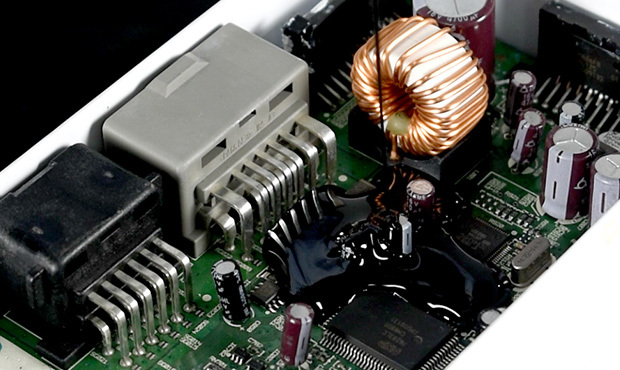Can the curing agent ratio be increased in silicone potting? What are the adverse factors?
Time:2024-08-08
Views:314
Silicone potting consists of agent A and agent B. The two need to be mixed according to the proportion in the instructions before the substrate can be potted. During construction, the curing agent ratio is increased by yourself due to various factors. Is there any impact? Are there adverse factors?
Can the curing agent ratio of potting glue be changed?
When mixing the potting glue, try to strictly follow the mixing ratio according to the instructions. If necessary, the curing agent ratio can be appropriately changed. For example, in winter, the curing agent ratio can be appropriately increased to accelerate the curing purpose. In summer, the temperature is high, and the glue reacts faster after mixing. In order to obtain more operating time, the curing agent ratio should be appropriately reduced to extend the operating time and curing time.
However, the curing agent ratio should not be changed too much, otherwise the glue will easily have various problems after curing. If necessary, you can buy suitable potting glue according to the season. The performance of this kind of potting glue is more guaranteed. For example, TENSAN focuses on the research of potting glue and provides customized potting glue application solutions. It has a wide range of uses and can be applied to new energy, military, medical, aviation, shipbuilding, electronics, automobiles, instruments, power supplies, high-speed rail and other industries.
What are the adverse factors after the potting glue changes the curing agent ratio?
1. Bubbles are prone to appear. The glue becomes more viscous after the curing agent increases. The overly viscous glue is not conducive to automatic defoaming during the curing process, and bubbles are easy to appear after curing.
2. Curing strength. After the potting glue excessively changes the curing agent ratio, it is easy to cause various problems in the glue even if it is thoroughly cured. For example, curing strength is a common problem, and the performance of the glue is not guaranteed.
3. It cannot be completely cured. If the curing agent content is low at low temperature, it will not be completely cured. Curing for too long will also cause various problems, such as the colloid is easy to break during use.
4. The elongation rate is low. If the mixing ratio of the potting glue changes too much, the curing agent increases or decreases significantly, and the elongation rate of the glue liquid is easily deteriorated after curing, or even easily broken.
Using one of the two components of the silicone potting alone will not have any effect, and the two components can only perform well after being fully mixed. Before mixing the glue liquid, the raw materials need to be stirred evenly, and then the A agent is added to the B agent and mixed again to prevent the raw materials from precipitating in the glue liquid and not being fully mixed, resulting in stratified curing. The performance of the glue liquid after stratified curing is unstable and safe to use.









